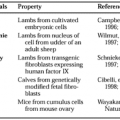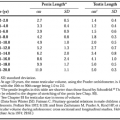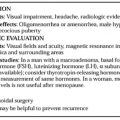RIEDEL THYROIDITIS
Part of “CHAPTER 46 – THYROIDITIS“
Riedel thyroiditis is a most unusual and rare form of thyroid disease, which is characterized by extensive fibrosis of the thyroid gland. In these patients, the gland is hard, woody in consistency, and often fixed to the adjacent tissues. Occasionally, the gland may be asymmetric, presenting as a unilateral mass. In many patients with Riedel thyroiditis, local symptoms, including hoarseness (recurrent laryngeal nerve involvement) or dysphagia, are present. Pathologically, the gland shows an inflammatory fibrous process consisting of activated T lymphocytes, macrophages, aggregates of B lymphocytes, eosinophilia, and deposition of eosinophilic products, which may stimulate fibrosis67 both within and outside the thyroid capsule (Fig. 46-4). Because invasion of local tissues typically occurs, the pathologic appearance initially may resemble invasive anaplastic carcinoma.68 The etiology is unclear, but it may represent a variant of Hashimoto thyroiditis, as evidenced by the mononuclear infiltrate, the detection of thyroid-specific autoantibodies in many patients, and the response to glucocorticoid treatment.67 Riedel thyroiditis may represent the extension into the thyroid of a more generalized, invasive fibrosis syndrome, such as retroperitoneal fibrosis. Indeed, patients have been described with both Riedel thyroiditis and retroperitoneal fibrosis. This diagnosis should be considered in patients who present with a woody, hard thyroid gland that is fixed in position and associated with local symptoms. Laboratory evaluation—including thyroid function tests, erythrocyte sedimentation rate, and thyroid antibodies—may be normal, but a thyroid scan may reveal a nonspecific reduction in uptake in the affected areas. The diagnosis can be best established by a biopsy; however, specimens from patients with other thyroid disorders (e.g., Hashimoto thyroiditis) also may contain notable fibrotic tissue. Surgical treatment may be required if there are significant local symptoms or evidence of tracheal compression. Corticosteroids occasionally have been helpful in reducing the goiter size and alleviating local symptoms.69
Stay updated, free articles. Join our Telegram channel

Full access? Get Clinical Tree






